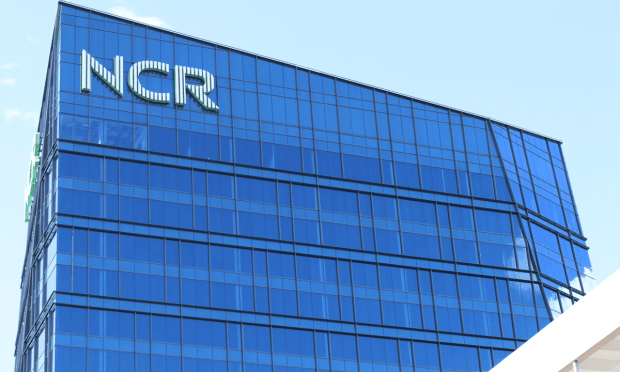NCR’s Corporate Split Uses ATMs to Boost Self-Service, Digital-First Banking

For NCR Corp., the goal is to capitalize on the continued shift to digital banking. Underpinning its newly-announced split into two independent companies, we see some other shifts taking root: A shift from roots as a hardware-centric vendor towards software and a shift from manufacturing to an asset-lite model.
As had been announced Thursday after the markets closed and as detailed on a Friday morning presentation by management, NCR is planning to separate into two independent, publicly traded companies: CommerceCo and ATMCo. One entity will be focused on digital commerce, the other on ATMs.
And between those two entities lies a bridge of connectivity and a range of targeted synergies that further extend NCR’s bundled services offerings and recurring revenues.
At this writing, Wall Street, which had arguably been hoping for an outright sale of the company, is punishing the stock as investors have sent the shares down by more than 17% in intraday trading.
Beyond the Stock Price Gyrations
But beyond the vagaries of stock price trading lies long-term strategy, and in detailing the split, which should be completed next year, NCR CEO Mike Hayford and CFO Tim Oliver said that the sectors most poised to benefit from the various (and, ultimately, connected) offerings will be retail, digital banking and hospitality.
Drilling down into the supplementals and detailing what management said on the call would be a model that offers “end-to-end services,” CommerceCo, with the point of sale (POS) component and with 71% of revenues derived from software and services, has a 55% recurring revenue stream, according to Oliver, who said that the separated companies would have cash flow more than sufficient to fund ongoing operations.
As Hayford noted on the call, CommerceCo’s key markets would be retailers and restaurants that are modernizing their existing infrastructure, and NCR’s point of sale technology operates (via 1.5 million connection points currently in place) as a connection point to a larger suite of products.
With a focus on the ATM business, management stated on the call, too, that software and services will become more prevalent. Hayford said that ATMCo’s ATM-as-a-Service model would boost subscription services sold to banks as self-service and mobile banking continue to see tailwinds – and all of it funnels into cementing digital banking as a mainstay in financial services. Digital banking will demand new payments offerings too, at various points of interaction (including crypto), according to commentary on the call.
There’s also still steady demand for that most basic of ATM functions, said Hayford. “Cash will be a continued, and needed, component around the globe,” he told analysts. Financial institutions would find it an attractive option to outsource a range of functions to NCR’s platform, which will ultimately drive ATMCo’s recurring revenue share to be 80% of the top line.
Recent research, conducted jointly between PYMNTS and Stripe, and delving into the connected economy, has found that mobile banking has taken root in everyday, tech-driven life across 11 countries. Digital banking channels are among the most preferred channels for managing finances. As many as 59% of all consumers we surveyed in those countries engage in mobile banking activities.
